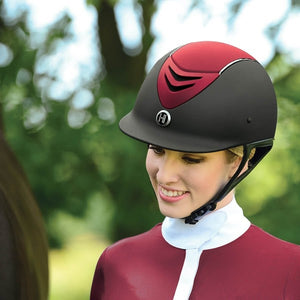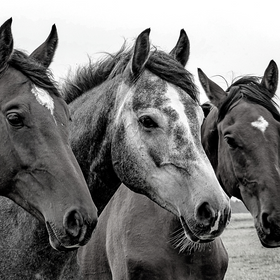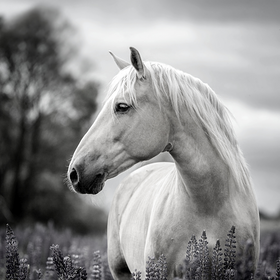
Spring Cleaning: No More Muddy Horses
After a long, cold winter, your horse may be just as in need of a spring cleaning as your barn. And although he probably enjoyed it more than you did, there’s a good chance he may look rough around the edges. Luckily, spring cleaning your equine partner can be much more fun than cleaning the barn or house.
Manage the Spring Shedding
The first thing to address on your horse in the spring is shedding. Even if your horse has been clipped and blanketed all winter, it will still shed some. Thorough grooming in the spring removes mud, dirt, and itchy winter hair. Also, it helps stimulate circulation and distributes natural oils to the skin.
Grooming is also a great way to thoroughly look at your horse and notice any injuries or irritations that may have gone unnoticed. Here are some tools and tricks for helping your horse get rid of his winter coat.
Curry Comb
The traditional way to deal with spring shedding is with a rubber or plastic curry comb. And, of course, some good old elbow grease and patience. Use the curry comb on your horse's coat vigorously in a circular motion to loosen any dead hair. Don’t forget to curry the legs and underbelly gently.
Shedding Blade or Grooming Gloves
Additionally, you can use a flexible metal shedding blade. Run this tool gently across your horse’s body in the same direction as the hair. Don’t use a shedding blade on sensitive skin like the head or legs.
Another great product on the market is a pair of grooming gloves. You can use these mitt-like gloves to massage your horse and work out the loose hair.
Brushes
The stiff-bristled brush is used to brush away the dead skin cells and hair loosened by the curry comb. Follow this with a soft-bristled brush, and pay special attention to delicate areas like the head, ears, and inside the hind legs.
Opt to Clip
If your horse has a heavy coat, you may clip him. A clipped horse can cool down and dry more quickly, preventing chills and skin conditions caused by frequently damp skin. If you decide to clip, ensure your horse is dry and as clean as possible before you start.
Once your horse is clipped, brush him thoroughly, or even better, bathe him if it’s warm enough.
Cleaning the Coat
Mane and Tail
After your horse’s coat has been thoroughly brushed, it’s time to tackle the mane and tail. It’s not uncommon for these to be neglected over the winter.
First, start untangling the mane and tail with your fingers to remove burrs and debris. To make this easier, spray a detangling product on the mane and tail. Once untangled, carefully brush the hair. Start at the bottom of the hair and slowly make your way up.
You might leave your horse’s mane and tail natural, depending on your discipline. Or, it could be a great time to trim the tail and shorten his mane. You can use scissors for both of these or pull the mane with a pulling comb.
Bath Time
As we know, with spring comes warmer weather. Choose a warm, sunny day to bathe your horse to complete his thorough spring cleaning. To be most effective, combine a small amount of gentle shampoo in a bucket of warm water. Wash your horse with soapy water and a sponge or grooming mitt.
It is best to start on the neck and back and work your way down the legs. Dunk his tail in soapy water and rub it with your hands. Use a sweat scraper to get rid of the extra soap. Then, rinse your horse well with fresh water and use the sweat scraper again. If you still see soap, you’ll need to do another rinse!
Follow these steps, and your horse will be squeaky clean quickly!





